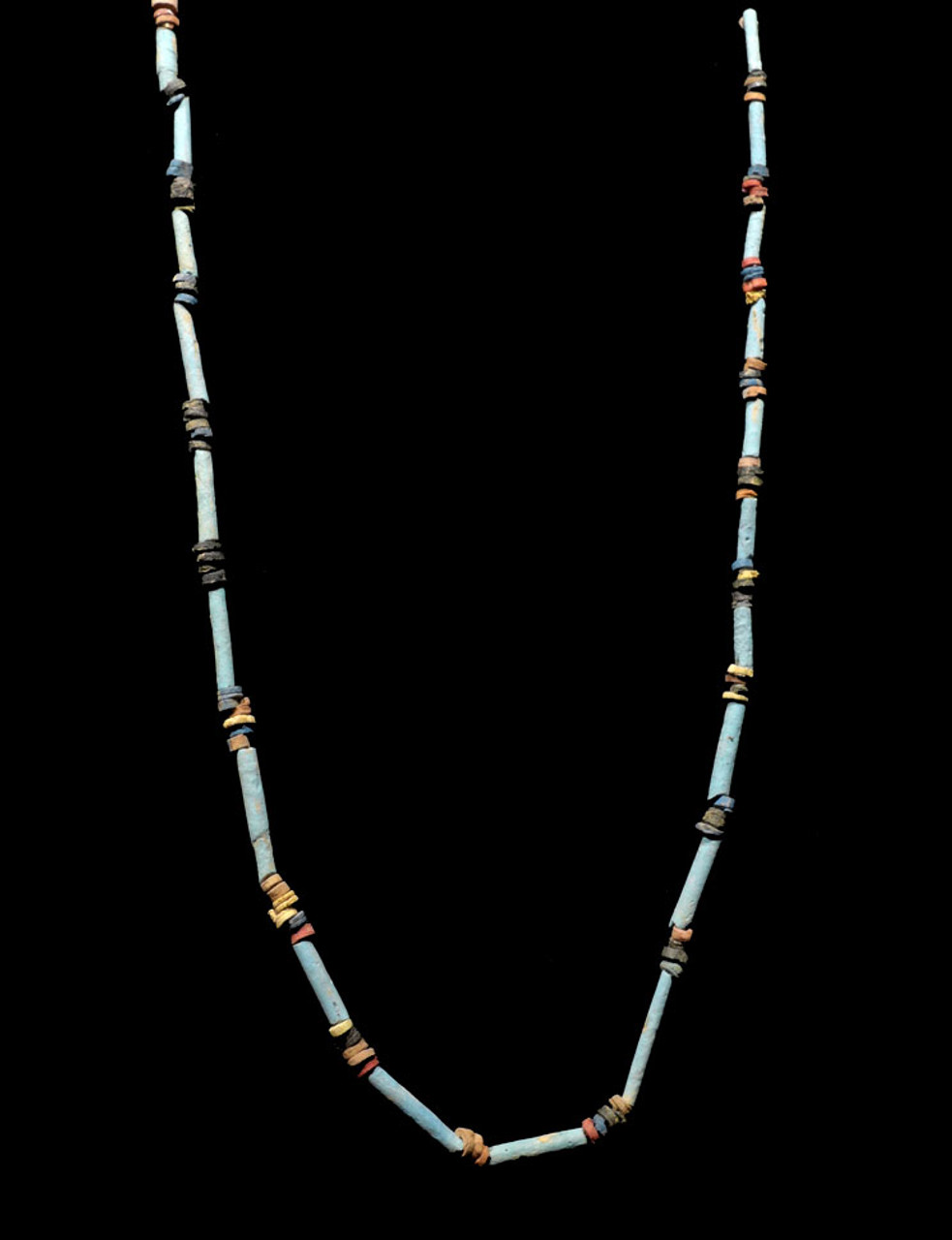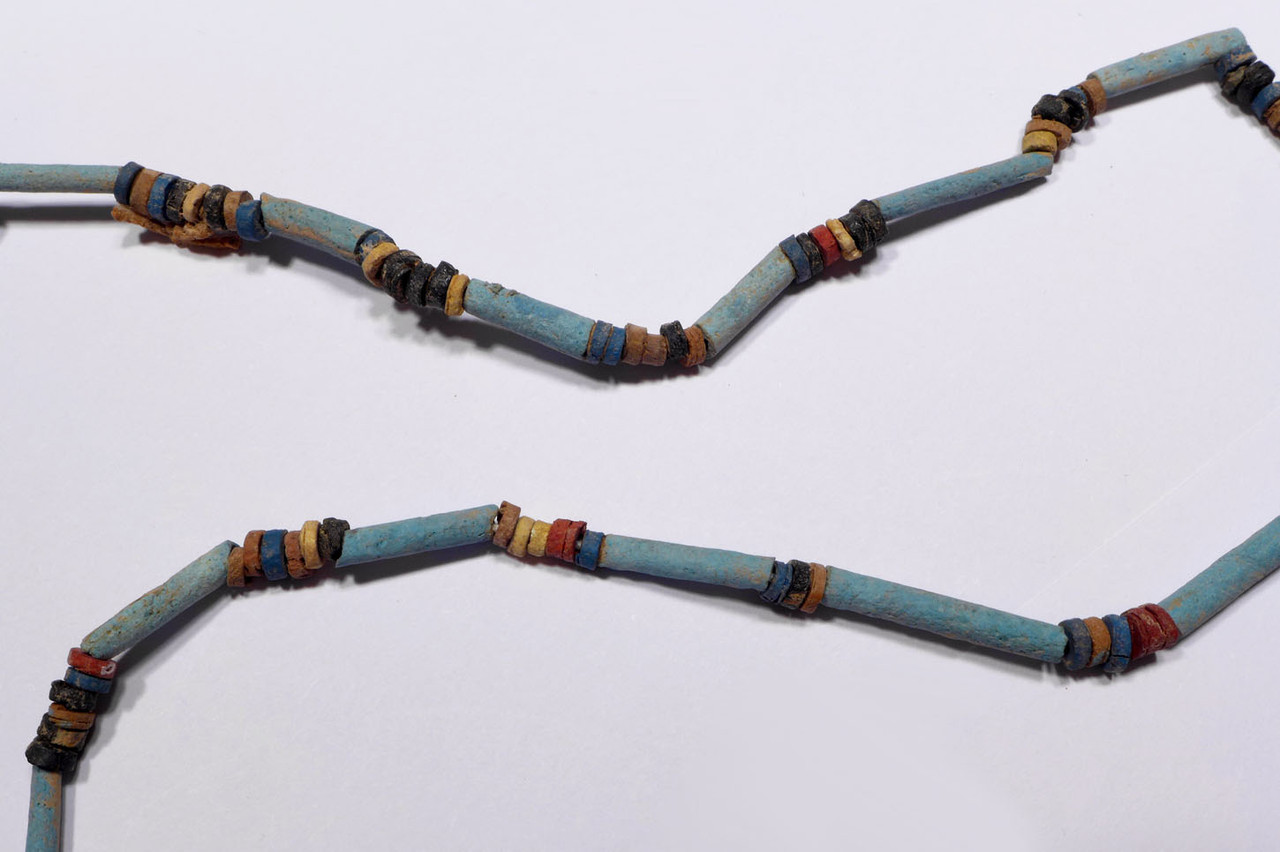Product Description
This is a beautiful restrung necklace using authentic ancient Egyptian faience, stone and clay beads. These beads all feature ancient mineral / sediment deposits in their microscopic crevices - evidence ONLY associated with AUTHENTIC ANCIENT beads. Beware of modern fakes.
The beads have been recently temporarily restrung on thread and if professionally restrung, they may be safely worn today. Because of its length, this unusually long strand can be restrung into multiple pieces by any local jeweler or kept as a continuous long necklace.
Be wary of modern copies that have been around for many decades and sold to unsuspecting tourists and brought back as an "authentic" piece, now littering numerous old collections. In our own museum lab facility, we subject to rigorous inspection and authentic every artifact we offer for sale, accompanied by a written lifetime, unconditional guarantee of authenticity and proper identification.
HISTORY
Faience was an invention by the ancient Egyptians which is a kiln fired mixture yielding a glaze that resembles the blue-green color of their prized gemstone, turquoise. The Egyptians made many objects and beads in faience and its oldest record dates back to Pre-Dynastic Egypt in the 4th millennium B.C..
At the end of the Pleistocene Period in the Nile Region, temperate conditions made for an ideal environment for the birth of a highly specialized Neolithic society between 7000 B.C. and 3000 B.C.. The Neolithic Fayum farming societies of Egypt cultivated emmer wheat and flax for cloth production. They grew their crops by the lake in the Fayum depression, hence the name for their tool culture. The Neolithic peoples also raised and herded goat, sheep, pig and cattle. Their living quarters left no trace in some regions but were likely made from reeds or skins over a light frame. Wattle-and-daub villages have also been attributed to these peoples. These Neolithic societies represent the oldest evidence of food production from the Nile dating back to 4400 B.C.. As time progressed, the farming villages gave way to cities and kingdoms, ushering in the famous ancient Egyptian Dynasties.
 US DOLLAR
US DOLLAR
 EURO
EURO
 AUSTRALIAN DOLLAR
AUSTRALIAN DOLLAR
 CANADIAN DOLLAR
CANADIAN DOLLAR
 POUND STERLING
POUND STERLING










